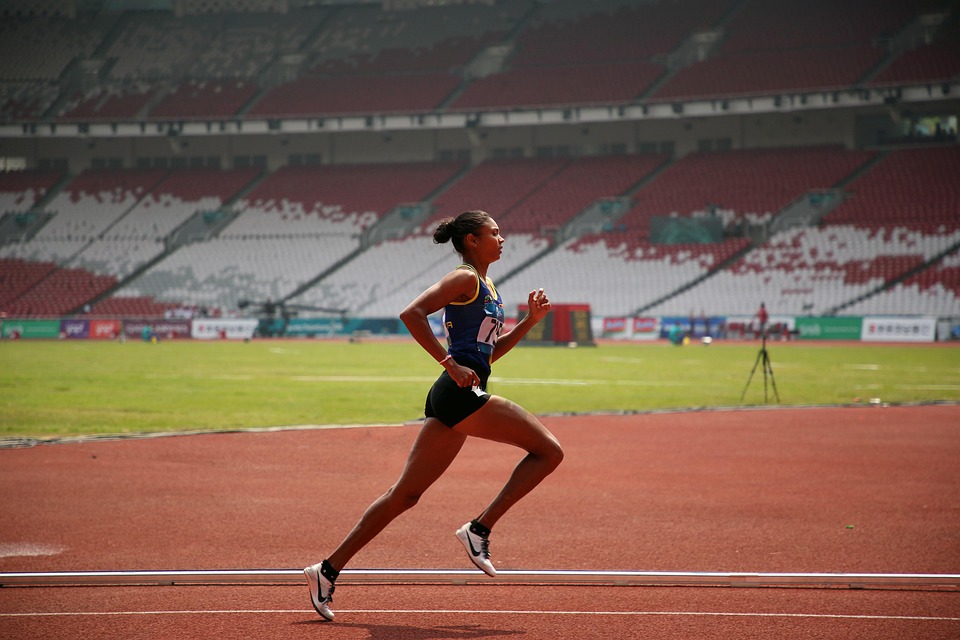Track and field is a spectacular showcase of athletic prowess, where speed, strength, and precision converge. Whether it’s the explosive start of a sprinter or the sophisticated technique of a long jumper, the physics behind these events plays a crucial role in determining performance. Understanding the science of speed not only enhances training but also captivates enthusiasts and athletes alike.
1. The Basics of Motion
At the heart of all track and field events lies the fundamental concept of motion, described by Newton’s laws. Newton’s first law of motion states that an object in motion will remain in motion unless acted upon by an external force. Sprinters, for instance, must overcome inertia to accelerate from a standstill, using their muscle power to propel themselves forward.
Acceleration and Force
Acceleration is defined as the rate of change of velocity. The formula ( F = ma ) (force equals mass times acceleration) illustrates the relationship between the two. The greater the force applied by the sprinter’s legs (through muscle contractions), the greater the acceleration they experience. This principle is crucial during the starts of sprints, where explosive power can significantly impact race outcomes.
2. The Power of Gravity in Jumps
Jumping events such as the high jump and long jump are greatly influenced by gravitational force. When an athlete leaps, gravitational acceleration (approximately (9.81 \, m/s^2 ) downwards) impacts their trajectory.
Parabolic Motion
In long jump, athletes aim for a parabolic path, utilizing the perfect angle of takeoff (approximately 20-25 degrees) to maximize distance. The optimal angle ensures the combination of horizontal and vertical velocity components, allowing for peak height and distance. Athletes with a keen understanding of their center of mass can achieve optimal outcomes by fine-tuning their technique.
Energy Conversion
At the moment of takeoff, kinetic energy (from running speed) is converted into gravitational potential energy. The efficiency of this energy conversion—how athletes utilize their running speed at takeoff directly affects their jump distance.
3. Air Resistance and Drag
Speed is not just about raw power; it’s also a dance with the air. Athletes face air resistance, which can slow them down. This drag force, represented by the equation ( F_d = \frac{1}{2} C_d \rho A v^2 ) (where ( C_d ) is the drag coefficient, ( \rho ) is the air density, ( A ) the reference area, and ( v ) the velocity), becomes increasingly significant as speed increases.
Streamlining Technique
Sprinters often adopt streamlined positions to minimize drag. By bending slightly forward and keeping arms close to the body, they can reduce the surface area exposed to air, thus lessening resistance and allowing for faster speeds.
4. The Role of Biomechanics
Biomechanics examines the mechanical laws governing human movement. Understanding biomechanics enables athletes to refine their techniques, optimizing performance while reducing injury risk.
Stride Length and Frequency
In sprinting, two key factors influence speed: stride length and frequency. Improving either can enhance overall speed. Athletes must find the right balance; longer strides can lead to greater speed but may disrupt rhythm, while shorter, quicker strides may increase frequency but decrease effective distance covered. The ideal combination varies among individuals, emphasizing the need for personalized training strategies.
Muscle Dynamics
Muscles play a vital role in track and field. Fast-twitch muscle fibers are crucial for explosive sprints, while slow-twitch fibers enhance endurance for middle-distance events. Understanding an athlete’s muscle composition can inform specific training regimens focusing on strength, speed, or endurance.
5. Technology and Innovation in Training
Modern track and field has benefited significantly from advancements in technology. High-speed cameras analyze an athlete’s gait, helping coaches identify inefficiencies. Wearable technology tracks metrics like heart rate and distance, allowing for data-driven training adjustments.
Material Science
Innovations in material science have even brought about improvements in footwear—running shoes designed to optimize grip, cushioning, and propulsion can enhance performance, making the biomechanics of running even more efficient.
Conclusion
The physics behind track and field events reveals a fascinating interplay between speed, motion, and biomechanics. Athletes harness the principles of force, motion, and energy to push the limits of human performance. By understanding the underlying science, competitors can refine their techniques and strategies, ultimately leading to remarkable achievements on the track. As technology continues to evolve, the potential for breaking records seems boundless, making the science of speed an ever-evolving frontier in the world of athletics.



